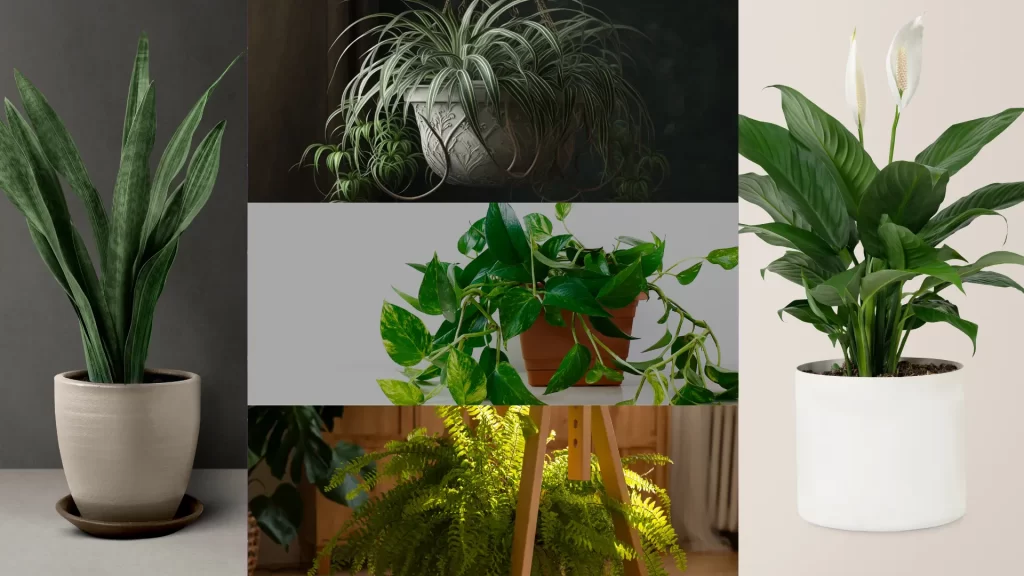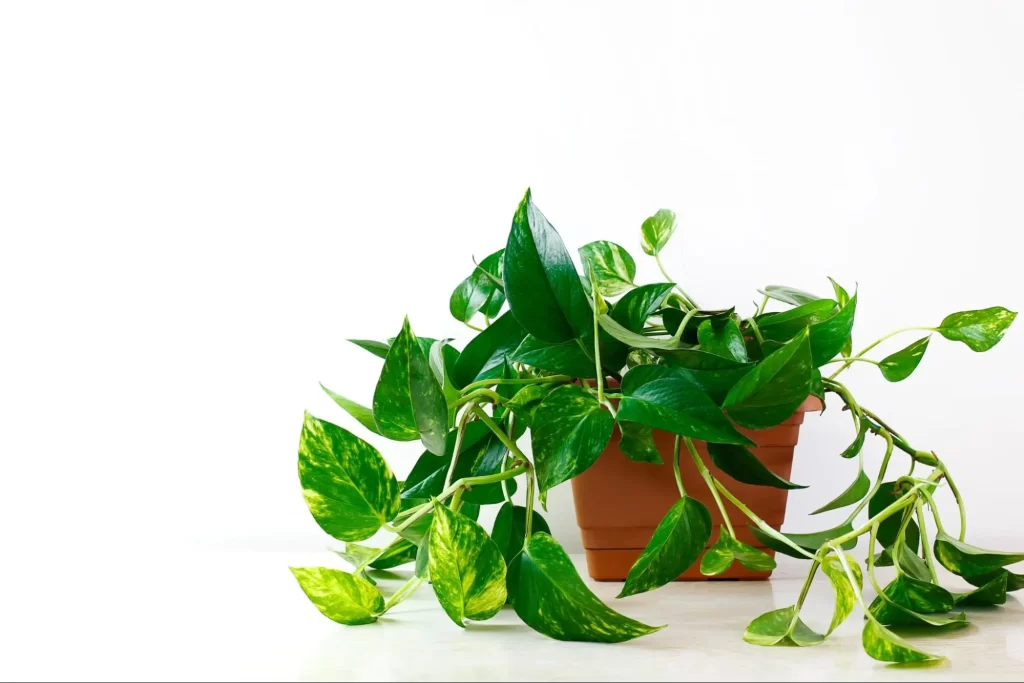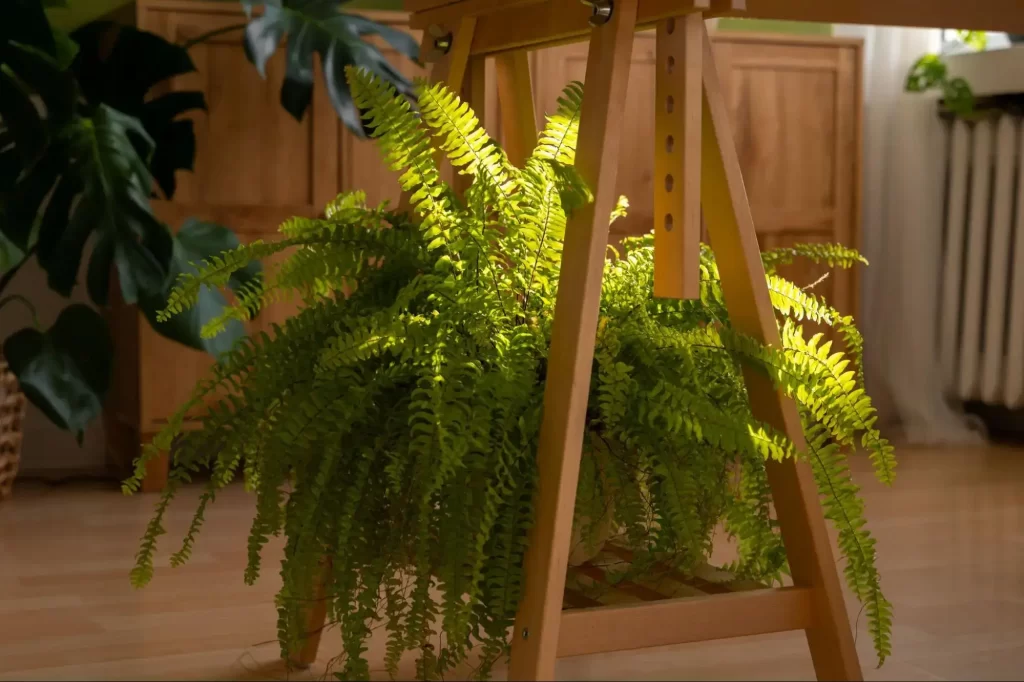Indoor air can be more polluted than the air outdoors. But, these houseplants can act as natural air purifiers, and help make your indoor air quality better.
Did you know that your indoor air may be more polluted than the air outdoors? According to the Environmental Protections Agency (EPA), a growing body of scientific evidence indicates that pollution from indoor combustion sources like gas stoves and furnaces, household cleaners, tobacco products, and household materials and furnishings can cause irritation of the eyes, nose and throat, headaches, fatigue, and longer term issues like asthma.
Thankfully, a natural solution may help: houseplants! Some of these leafy friends not only brighten up your space but also can act as natural air purifiers, filtering out some harmful toxins and releasing fresh oxygen.
NASA Clean Air Study, a project led by NASA and ALCA (Associated Landscape Contractors of America) in 1989, suggested that certain indoor plants may naturally remove common indoor pollutants such as benzene, trichloroethylene, and formaldehyde from the air.
Be aware, however, that a few houseplants won’t magically eliminate all toxins from a home. For significant air purification, you’d need a large number of plants or—better—a home air cleaner or purifier. Also be aware that, while plants can remove certain VOCs, they are less effective at removing other pollutants like particulate matter from dust and smoke.
Important Note: If you have pets or small children, always research the toxicity of plants before bringing them home. Some plants on this list can be harmful if ingested.
If you’re new to plant parenthood or just looking for easy-care options, here are five hardy houseplants that thrive in most conditions:
1. Golden Pothos (Epipremnum Aureum)
With its neon green foliage and rounded leaves, golden pothos, also known as money plant or devil’s ivy, looks great and helps keep the indoor air fresh by removing air pollutants like carbon monoxide, xylene, benzene and formaldehyde.
2. Boston Fern (Nephrolepis Exaltata Bostoniensis)
With a hint of the tropics, Boston ferns look beautiful and can improve indoor air quality by absorbing air pollutants like xylene, toluene, and formaldehyde and releasing oxygen to provide fresh air.
3. Spider Plant (Chlorophytum Comosum)
In the preliminary results of NASA testing, spider plants were able to remove 95% of formaldehyde from a sealed chamber in 24 hours. In addition to removing formaldehyde, this plant can filter out xylene, styrene, carbon monoxide, benzene, and toluene. Given direct sunlight, this pet-friendly plant is low maintenance.
4. Peace Lily (Spathiphyllum)
The leaves of peace lilies can absorb trichloroethylene and benzene, two of the most common pollutants found in indoor air. These pollutants move from the plant’s leaves to its roots where the microbes present in soil break them down. Peace lilies also release a lot of moisture into the air.
5. Snake Plant (Dracaena trifasciata)
The snake plant, also known as mother-in-law’s tongue, is a low-maintenance air-purifying indoor plant that can convert substantial amounts of CO2 to O2 (oxygen) during the night. It’s a good choice for keeping in a bedroom for air quality.
How Effectively These Plants Deal With Pollutants
The effectiveness of these plants at removing pollutants can vary in different weather conditions and climates. Snake Plant and Peace Lily may outperform others because they target a wide range of pollutants and survive amid a range of conditions.
| Indoor Plants | Most Effective On Pollutants | Effectiveness |
| Golden Pothos | Formaldehyde, xylene, benzene, and carbon monoxide | High: Works under varied climates and weather conditions |
| Boston Fern | Xylene, toluene, formaldehyde | Moderate: May not perform its best in a moist or humid environment. |
| Spider Plant | Formaldehyde, xylene, styrene, carbon monoxide, benzene, toluene | High: Works under varied climates and weather conditions. Also requires less sunlight exposure. |
| Peace Lily | Benzene, formaldehyde, trichloroethylene | High: Works under varied climates and weather conditions. Best for a high humidity environment. |
| Snake Plant | Formaldehyde, Benzene | High: Works under varied climates and weather conditions. |
Pollutants That Are Filtered Out By Indoor Plants
| Pollutants | Sources |
| Benzene | Found in detergents, plastics, dyes, floor finishes, gasoline, varnishes, rubber, and paints |
| Formaldehyde | Found in cabinets, gas stoves, grocery bags, carpet backing, paper towels, and tobacco smoke |
| Styrene | Found in fiberglass, wiring insulation, drinking cups, packaging materials, and carpet backing |
| Carbon monoxide | Found in stove, fireplace, and furnace fumes |
| Ammonia | Found in cleaning products |
| Trichloroethylene | Found in varnishes, inks, lacquer and adhesive |
| Toluene | Found in paints, paint removers, paint thinners, paint brush cleaners, inks, oils, and nail polish |
How To Maximize Air Purification Through Indoor Plants
By giving the right care and maintenance to your plants, you can improve their ability to purify the air around you. Also, the more anti-pollution plants you have, the more pollution they will handle. Here are a few tips that will help:
- Increase the quantity. Try utilizing at least one plant for every 100 square feet of your home (or any other indoor space).
- Use high-quality potting mix. Plant health heavily depends on the potting mix, which helps retain good root condition. So, provide your plants with a well-draining potting mix.
- Give them adequate water. Indoor plants generally don’t need regular watering to survive, but they still need some of it. So, make sure you water them once the pot soil appears to be dry(don’t overwater!).
- Put them under sunlight. Your indoor plants need some sunlight to stay in a good condition for longer. Place them near a window or under a grow light.
- Wipe away dust. Leaves of some plants catch pollutants and transfer them to the roots. Help them do this by preventing dust from accumulating on the leaves.
- Re-pot as they grow big. If a plant has outgrown its pot, carefully repot it in bigger pots to prevent stunted growth.
References:
- What Are the Benefits of Plants Indoors and Why Do We Respond Positively to Them?, Actahort.org, Written by Virginia I. Lohr
- NASA Clean Air Study – Wikipedia
- Peace Lily And Pollution – Do Peace Lilies Help With Air Quality, GardeningKnowHow, Written by Lizz Baessler
- Spider Plants and Clean Air, National Wildlife Federation, Written by Frank Kuznik












 Don Vandervort writes or edits every article at HomeTips. Don has:
Don Vandervort writes or edits every article at HomeTips. Don has:
